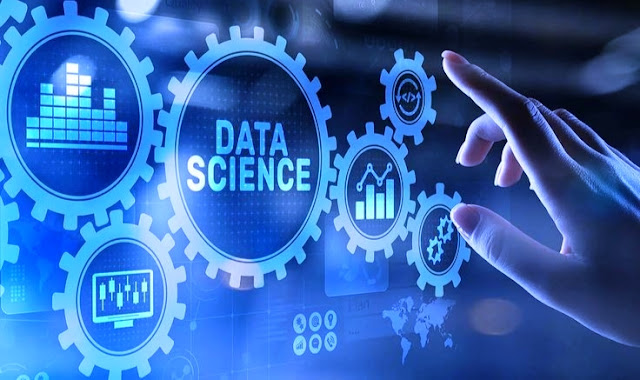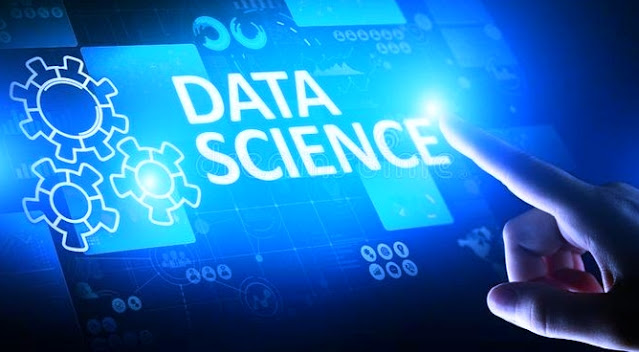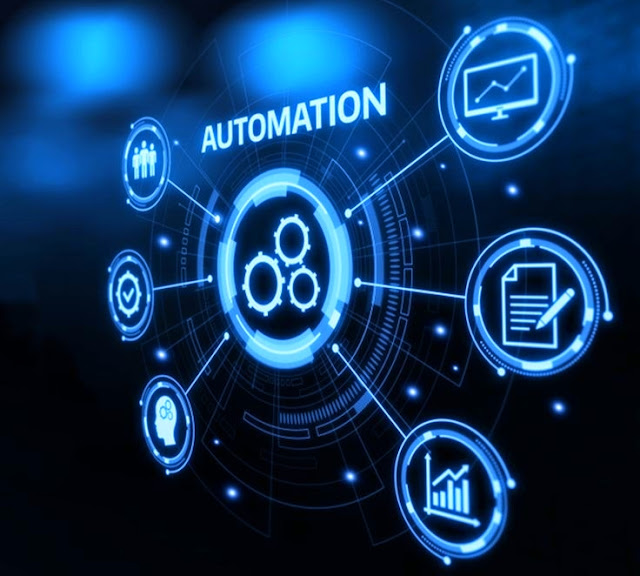Introduction: Data And Information Difference With ExampleIt often seems as though
computers must understand us because we understand the information they
produce. However, computers cannot understand anything. Computers recognize
two distinct physical states produced by electricity, magnetic polarity, or
reflected light. Essentially, then understand whether a switch is on or off
In fact, the CPU, which acts like the "brain" of the computer,
consists of several million tiny electronic switches, called transistors. A
computer appears to understand information only because it operates at such
phenomenal speeds, grouping its individual on/ off switches into patterns
that become meaningful to us.
In the world of computing,
data is the term used to describe the information represented by groups of
on/off switches. Although the words data and information often are used
interchangeably, there is an important distinction between the two words. In
the strictest sense, data consist of the raw numbers that computers organize
to produce information. You can think of data as facts out of context, like the individual letters on this page. Taken individually, most of them do not have much, if any, meaning. Grouped together, however, the data con- vey specific meanings. Just as a theater's marquee can combine thousands of lights to spell the name of the current show, a computer can group meaningless data into useful information, such as spreadsheets, charts, and reports. |
computer data recovery near meFrom a very early age, we are
introduced to the concept of numbers and counting. Toddlers learn early that
they can carry two cookies, one in each hand. Kindergartners start counting
by twos and fives. Invariably, we use the decimal number system. Our number
system is based on 10, most likely because we have 10 fingers. A number
system is simply a manner of counting. Many different number systems exist.
Consider a clock. Clocks have 24 hours, each composed of 60 minutes. Each
minute is composed of 60 seconds. When we time a race, we count in seconds
and minutes. Computers, like clocks, have
their own numbering system, the binary number system.
|
sql phone number data typeTo a computer, everything is a number. Numbers are numbers, letters and punctuation marks are numbers, sounds and pictures are numbers. Even the computer's own instructions are numbers. When you see letters of the alphabet on a computer screen, you are seeing just one of the computer's ways of representing numbers. For example, consider the following sentence: Here are some words.This sentence may look like a string of alphabetic characters to you, but to a computer it looks like the string of ones and zero. Computer data looks especially strange because people normally use base 10 to represent numbers. The decimal number (decimal means "10" in Latin) is called "base 10" because 10 symbols are available: 0, 1, 2, 3, 4, 5, 6, 7, 8, and 9. When you need to represent a number greater than 9, you use two symbols together, as in 9 + 1 = 10. Each symbol in a number is called a "digit," so 10 is a two- digit number. To build all the two-digit numbers (10-99) in the decimal number system, you use up all the possible pairings of the system's 10 symbols. After all 90 of the two-digit numbers are built, then you begin using three-digit numbers (100-999), and so on. This pattern can continue indefinitely, using only the 10 symbols you started with.
As the numbers start to become longer, the concept of place becomes important. Consider the number 1,325. Four places are represented in this number: the thou- sands, hundreds, tens, and ones. Thus, there is a 1 in the thousands place, a 3 in the hundreds place, a 2 in the tens place, and a 5 in the ones place. illustrates the value of place. In a computer, however, all data is rep- resented by the state of the computer's electronic switches. A switch has only two possible states-on and off-so it can rep- resent only two numeric values. To a computer, when a switch is off, it represents a 0; when a switch is on, it represents a 1. Because there are only two values, computers are said to function in base 2, which is also known as the binary number system (bt means "2" in Latin). When a computer needs to represent a quantity greater than one, it does the same thing you do when you need to rep- resent a quantity greater than nine: it uses two (or more) digits. With only two digits to work with, there are many fewer two- digit pairings than in the decimal system. Binary has only two two-digit pairings. Once these two pairings are exhausted, four three-digit pairings are built. To familiarize yourself with the binary system, In examining several trends become apparent. The first trend: no tice that all odd numbers in decimal have a 1 as the last binary digit. A second trend: the pattern repeats. Consider the first four digits: 0, 1, 10, 11. The three- digit numbers repeat the pattern in order with a 1 (and filler zeros) placed at the beginning. The same is true of the eight four-digit numbers. They simply repeat the previous eight patterns in order, placing a 1 (and filler zeros) at the beginning. This pattern repeats indefinitely.
|
Data ConversionsIn the decimal number system, the value of a number is defined by both the number and the number's position. The Most Significant Digit (MSD), is the digit in a number which can affect the number significantly, ie, the value of the number having the greatest amount is either increased or decreased. It is the non-zero digit of a number that is in the farthest left. The Least Significant Digit (LSD) is the digit in a number that has the least effect on that number. Any changes in the LSD will have minimal effect on the value. It is the non-zero digit of a number that is in the farthest right. For example, consider a number 243087, the number 2, which is the first digit is the MSD, while the number 7, which is in the last digit is the LSD. Similarly, in binary number system, the Most Significant Bit (MSB) in a binary number is the bit that has the greatest effect on that number. The LSB (Least Significant Bit) in a binary number is the bit that has the least effect on that number. The non-zero bit of a number that is the farthest LEFT is the MSB, and the bit farthest RIGHT is the LSB. For Example:10011000 The Left side 1 is the MSB and The Right Side 0 is LSB. The decimal equivalent of the fractional fractional binary number can be done in the same manner. The exponents are powers of two with negative values for digits on the right side of the binary point. In both these systems, numbers to the left of the radix point are whole numbers, and those to the right are fractional numberish.
The decimal value of the binary sequence (101112)2 is:
The decimal equivalent of the fractional binary number can be done in the same manner. The exponents are powers of two with negative values for digits on the right side of the binary point. The decimal value of the fractional binary sequence ( 0.1101)2 is given below:
|
Decimal to Binary. To convert a decimal number to a binary number, the decimal number is successively divided by 2 (the base of the binary number). Fol. low the steps listed below to convert a decimal number to a binary number: 1. Divide the decimal number by 2 and note the remainder, 2. Divide the quotient you got from the previous division once again by 2, and note the remainder. For each step, the division results in a remainder of 1 or 0. 3. Repeat step 2 until the quotient becomes 1. 4. The binary number is obtained by ordering the 1s and Os obtained as re mainders from bottom to top. The binary value of 46 is:
|
|
The binary value of 0.2 is:
Binary Arithmetic DataArithmetic in binary is similar to the arithmetic in decimal number systems. You may perform addition, subtraction, multiplication and division on binary numerals also. Binary Addition. Binary addition is similar to the addition of decimal numbers. When the value of addition exceeds the value 1, say 10 or 11, then the 1 is camed over to the left of the current position. The rules for adding two binary digits are given below:
For example, let us add the binary number (1011111)2 and(10111)2= (1000110)
Binary Subtraction DataIn binary subtraction, binary number of lower value is subtracted from the binary number of higher value. The following table explains the subtraction of digit Y from digit X. If Y is greater than X, then the 1 is borrowed from the next position. When the binary digit 0 borrows 1 from the next more significant bit position, it becomes 10.
For example, let us subtract the binary number 1112 and10002=(0000)
Binary Multiplication DataBinary numbers are multiplied in the same manner as decimal numbers. When two binary numbers are multiplied, for each digit of the second number, the product of that digit of the first binary number is calculated. Then it is shifted leftward so that its rightmost digit lines up with the digit in second number that was used. The sum of all these partial products gives the result. The following rules are followed to multiply two binary numbers:
Binary Division Data ProcessBinary numbers are also divided in a manner similar to decimal numbers. The division is done by the repeated process subtraction. In binary division, the following rules are followed:
Hexadecimal System Data ProcessHexadecimal system uses 16 digits,0, 1, 2, 3, 4, 5, 6, 7, 8, 9, A, B, C, D, E, F and thus, the base is 16. Hexadecimal numbers are compact and easy to read. Conversion of a number from binary to hexadecimal system and vice-versa is quite simple. enables you to easily understand the conversion of every nibble (4 bits) of a hexadecimal digit.
In the process of converting a binary number to hexadecimal, first consider the leftmost 4 bits, find its equivalent and then move to the rightmost 4 bits. For example:
So, hexadecimal equivalent of the binary number 1001011011 0010112 is 96CB16. To convert hexadecimal number to its binary equivalent, write down the binary number for each hexadecimal digit. For example: (DEC2)16 So, binary equivalent of the hexadecimal number DEC216 is 11011110110000102 To convert a hexadecimal number to decimal, multiply each hexadecimal number with the base 16 to the power of its position. For example, (3AC)16 So, decimal equivalent of the hexadecimal number 3AC16 is 940_{10} In the process of converting a decimal number to its hexadecimal equivalent, divide the decimal number with 16 and note down its remainder. The hexadecimal number is obtained by ordering the remainders from bottom to top. Boolean Data AlgebraThe digital circuits pas Boole a digital computer are designed using a mathemati discipline known as Boolean algebra, It describes the relationship between the puts and outputs of digital circuit. Boolean algebra was named between the George Boole, an English Mathematician, who had proposed the basin honor of Galgebra. Boolean algebra is used mainly by design engineers in order to obtain the required output by using least number of logic gates. Like any other algebra, Boolean algebra also uses variables and operations. A Boolean variable has only two possible values which is either true or false or as 1 or 0. OR, NOT and AND are the basic logical operations.
A AND B = A.B The 2-input AND OPERATER | |||||||||||||||||||||||||||||||||||||||||||||||||||||||||||||||||||||||||||||||||||||||||||||||||||||||||||||||||||||||||||||||||||||||||||||||||||||||||||||
|
A |
B |
Y=A.B |
|||||||||||||||||||||||||||||||||||||||||||||||||||||||||||||||||||||||||||||||||||||||||||||||||||||||||||||||||||||||||||||||||||||||||||||||||||||||||||
|
0 |
0 |
0 |
|||||||||||||||||||||||||||||||||||||||||||||||||||||||||||||||||||||||||||||||||||||||||||||||||||||||||||||||||||||||||||||||||||||||||||||||||||||||||||
|
0 |
1 |
0 |
|||||||||||||||||||||||||||||||||||||||||||||||||||||||||||||||||||||||||||||||||||||||||||||||||||||||||||||||||||||||||||||||||||||||||||||||||||||||||||
|
1 |
0 |
0 |
|||||||||||||||||||||||||||||||||||||||||||||||||||||||||||||||||||||||||||||||||||||||||||||||||||||||||||||||||||||||||||||||||||||||||||||||||||||||||||
|
1 |
1 |
1 |
The 2-input AND OPERATER
|
A |
B |
Y=A+B |
|
0 |
0 |
0 |
|
0 |
1 |
1 |
|
1 |
0 |
1 |
|
1 |
1 |
1 |
The 2-input NOR OPERATER
This NOT operation is expressed as Y=A^{\prime}
NOR Operations
The NOR operation is the combination of OR_{and~Nor} operations. NOR operation is done by inverting the output of an OR operator. The truth table for a 2- input NOR operator
|
A |
B |
Y |
|
0 |
0 |
1 |
|
0 |
1 |
0 |
|
1 |
0 |
0 |
|
1 |
1 |
0 |
This NOR operation is expressed as Y=\underline{A}+\underline{B}
XOR Operations
The XOR (exclusive-OR) operation is same as logical OR operation. The output is TRUE if either, but not both the inputs are true. The output is FALSE if both inputs are false or if both inputs are true. The truth table for a 2- input XOR operator
The 2-input XOR OPERATER
|
A |
B |
Y |
|
0 |
0 |
0 |
|
0 |
1 |
1 |
|
1 |
0 |
1 |
|
1 |
1 |
0 |
Boolean Laws
A description of any input condition which can be used to obtain the required output is called a Boolean expression. Thus, a Boolean expression is a combination of boolean variables, boolean constants and logical operators. All these expressions are based on the Boole's laws and theorems which are briefly explained.|
Name |
AND From |
OR From |
Explanation |
|
Identity |
1A=A |
0+A=A |
If one part of an expression has a term
which is TRUE then it is TRUE in all parts of the expression. |
|
Idempotent Law |
AA=A |
A+A=A |
A term which undergoes AND or OR
operation with itself is the terms equivalent. |
|
Inverse Law |
AA’=0 |
A+A’=1 |
A term which undergoes an AND operation
with its complement is equal to O and a term which undergoes an OR operation
with its complement is equal to 1. |
|
Commutative law |
AB=BA |
A+B=B+A |
The value of a term is not altered when
their order is changed. |
|
Associative |
(AB)C=A(BC) |
(A+B)+C=A+(B+C) |
The result is not affected due to
grouping of operands in any order. |
|
Distributive law |
A+BC=(A+B)(A+C) |
A(B+C)=AB+AC |
A term ANDed/ORed with an parenthetical
expression equals that term ANDed/ORed with each term within the parenthesis. |
|
Absorption |
A(A+B)=A |
A+AB=A |
An identity which links a pair of
binary operations. |
|
De Morgan’s law |
De Morgan’s Law |
(A+B)’=A’B’ |
The logical operators "AND"
and "OR" have rules which relate them in terms of one another
through negation. |
Bits and Bytes
When referring to computerized data, the value represented by each switch's state-whether the switch is turned on or off-is called a bit (a combination of binary digit). A bit is the smallest possible unit of data a computer can recognize or use. To represent anything meaningful (in other words, to convey information), the computer uses bits in groups.
|
Power of 2 |
Value |
|
0 |
1 |
|
1 |
2 |
|
2 |
4 |
|
3 |
8 |
|
4 |
16 |
|
5 |
32 |
|
6 |
64 |
|
7 |
128 |
|
8 |
256 |
A group of eight bits is called a byte. Half of a byte is called a nibble. With one byte, the computer can represent one of 256 different symbols or characters because the eight 1s and Os in a byte can be combined in 256 different ways.
The value 256 is more than the number of symbols; it is the number of patterns of 0 and 1 that can be created using eight bits. This number can be obtained using a calculation: There are two possible states for a switch, on and off. In a byte there are eight switches. To calculate the number of patterns, raise 2 to the number of bits: 2^{1}=256. the first 9 powers of 2.
The byte is an extremely important unit because there are enough different eight-bit combinations to represent all the characters on the keyboard, including all the letters (uppercase and lowercase), numbers, punctuation marks, and other symbols. If you look back at Figure 4A.1, you will notice that each of the charac ters (or letters) in the sentence Here are some words. is represented by one byte (eight bits) of data.
Text Codes
Early programmers realized that they needed a standard text code that was agree able to all of them. In such a system, numbers would represent the letters of the alphabet, punctuation marks, and other symbols. This standard code system would enable any programmer or program to use the same combinations of num bers to represent the same individual pieces of data. The four most popular text code systems invented are the following:
EBCDIC
EBCDIC (pronounced EB-si-dic) stands for Farended Binary Coded Decimal Interchange Code, EBCDIC is an eight-bit code that defines 256 symbols. It is still used in IBM mainframe and midrange systems, but it is rarely encountered in personal computers.
ASCII
ASCII (pronounced AS-key) stands for the American Standard Code for Information Interchange. Today, the ASCII character set is by far the most commonly used in computers of all types. Table 4A.10 shows the 128 ASCII codes. ASCII is an eight-bit code that specifies characters for values from 0 to 127.
Extended ASCII
Extended ASC!! is an eight-bit code that specifies the characters for values from 128 to 255. The first 40 symbols represent pronunciation and special punctuation. The remaining symbols are graphic symbols.
Unicode
The Unicode Worldwide Character Standard provides up to four bytes 32 bits to represent each letter, number, or symbol. With four bytes, enough Unicode codes can be created to represent more than 4 billion different characters or symbols. This total is enough for every unique character and symbol in the world, including the vast Chinese, Korean, and Japanese character sets and those found in known classical and historical texts.
In addition to world letters, special mathematical and scientific symbols are represented in Unicode. One major advantage that Unicode has over other text code systems is its compatibility with ASCII codes. The first 256 codes in Unicode are identical to the 256 codes used by the ASCII and Extended ASCII systems.






.png)





0 Comments